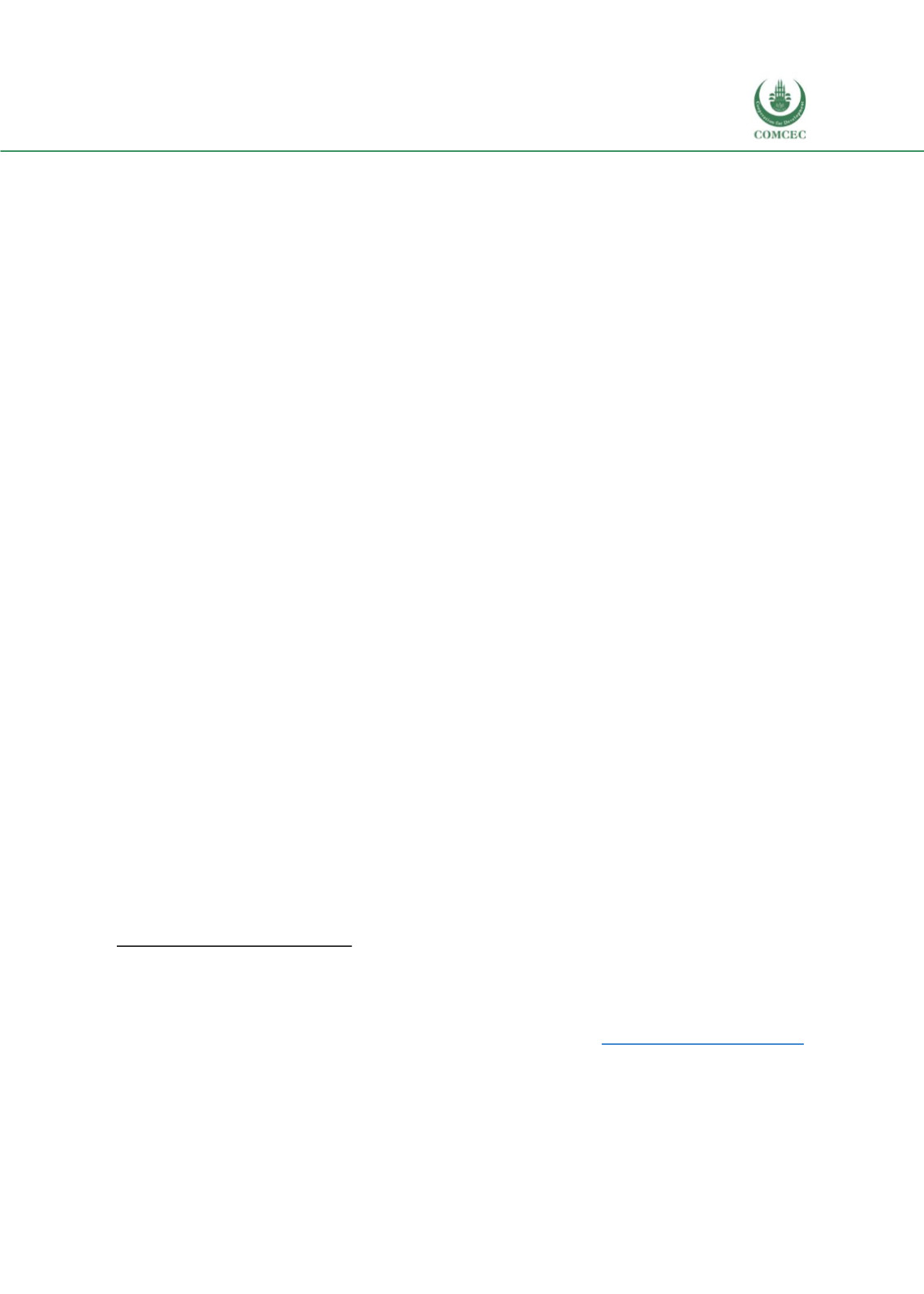

Increasing the Resilience of the Food Systems
In Islamic States in Face of Future Food Crises
141
The Islamic Corporation for the Insurance of Investment and Export Credit (ICIEC)—a member
of the Islamic Development Bank Group—launched the COMCEC Business Intelligence Center
(CBIC)
568
in the 34
th
Ministerial Session of COMCEC. This builds up business intelligence systems
to improve credit systems of member countries, whichwould, in turn, boost intra-OIC trade, FDI
growth and private sector lending by an estimated annual amount of $670 billion. The center
will develop a business intelligence database and provide advisory services.
569
The Standards and Metrology Institute for Islamic Countries (SMIIC) provides standardization
incentives by establishing harmonized standards amongst OIC countries. This prevents trade
barriers among member states and offers technical assistance and training in standardization
and metrology.
570
SMIIC Training Program 2018, conducted in Turkey, offered training on the
implementation of OIC/SMIIC Halal Standards and halal food auditing, which was attended by
20 delegates from OIC countries.
571
The Food and Agriculture Organization of the United Nations (FAO) provided support to OIC
worth nearly $600 million in 2012-2013,
572
a testament to its history of alliances with its
member countries. It has liaised with OIC countries on global, regional, and country levels.
In 2016-2017, FAO initiated the EWEA (Early Warning – EarlyAction)
573
pilot program in a few
countries considered vulnerable tonatural disasters and food insecurity, twoof which were OIC
states Somalia and Sudan. The initiative helps establish early warning triggers to mitigate the
impacts of aforementioned disasters. FAO’s Afghanistan program is its largest in the Asia Pacific
region. FAO’s rehabilitation and construction project for water points, cisterns, and workshops
increased water accessibility in Djibouti. FAO collaborated with the UK’s Department for
International Development (DFID) to restore the cereal production capacity of 61,523
households in Syria by offering them technical training and quality seeds.
574
Identifying Gaps in Cooperation
The OIC has notable gaps, however, which inhibit trade and cooperation and places member
countries at risk of future food crises. As noted earlier, there are high barriers to trade between
OIC member countries, especially in agricultural products. The OIC does not have a common
agricultural policy that can boost trade. The EU's Common Agricultural Policy—a common
policy for all EU countries, managed and funded by the EU’s budget—is commendable in its
efforts to safeguard EU farmers. It aims to keep the rural economy thriving andmanage climate
change.
575
Future versions of the policy will establish key objectives instrumental to a
568
ICIECMagazine. Issue No. 3. Feb 2019.
http://iciec.isdb.org/sites/default/files/FINAL-ICIEC%20MAGAZINE%20NO.3.pdf569
“Brief Note on OIC Business Intelligence Center.” COMCEC.
http://www.comcec.org/en/wp-content/uploads/2019/04/Brief-Note-on-OIC-Business-Intelligence-Center.pdf
570
SMIICwebsite.
https://www.smiic.org/en/smiic571
SMIIC Events page.
https://www.smiic.org/en/content/530572
“FAO and the Organisation of Islamic Cooperation: Serving ourmembers together
.” http://www.fao.org/3/a-i4085e.pdf573
“Acting early to prevent food crises in Sudan and Madagascar.” FAO.
http://www.fao.org/in-action/prevent-food-crises-sudan-madagascar/en/
574
“Supporting Syrian farmers to continue their cereal crop production.” FAO.
http://www.fao.org/in-action/supporting-syrian-farmers-cereal-crop-production/en/
575
“The common agricultural policy at a glance.” European Commission.
https://ec.europa.eu/info/food-farming-fisheries/key-policies/common-agricultural-policy/cap-glance_en
















